- Lara Gengarelly
- Extension Associate Professor
- Schoolyard SITES
- https://extension.unh.edu/programs/schoolyard-sites
- University of New Hampshire
- Malin Clyde
- Natural Resources Extension Specialist, Community Volunteers
- Schoolyard SITES
- https://extension.unh.edu/programs/schoolyard-sites
- University of New Hampshire Extension
- Erik Froburg
- https://www.unh.edu/leitzel-center/erik-froburg
- Project Director
- Schoolyard SITES
- https://extension.unh.edu/programs/schoolyard-sites
- University of New Hampshire
- Sameer Honwad
- Assistant Professor
- Schoolyard SITES
- https://extension.unh.edu/programs/schoolyard-sites
- University at Buffalo SUNY
Facilitators’
Choice
Choice
Public Discussion
Continue the discussion of this presentation on the Multiplex. Go to Multiplex





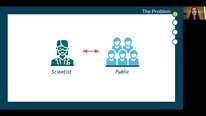
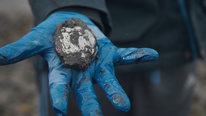
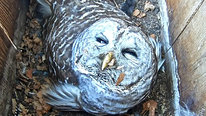
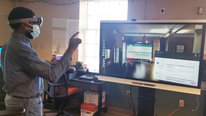
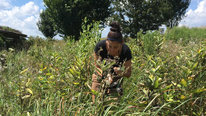
Lara Gengarelly
Extension Associate Professor
Welcome to Schoolyard SITES! This NSF-funded research project investigates a new professional development model for elementary school teachers. The program partners teachers (grades 2nd -5th) with Extension science volunteers to bring locally-relevant citizen science projects to their students. To date we have worked with two cohorts of teachers and volunteers. Our video focuses on the unique nature of the Schoolyard SITES model and our initial findings concerning the teacher-volunteer partnership and the incorporation of NGSS Science Practices and citizen science in these classrooms.
We are looking forward to hearing from others about lessons learned from formal and informal partnerships to support science learning and the use of established citizen science projects to support science teaching at the elementary level.
We are especially interested in discussion around questions like:
Catherine McCulloch
Senior Project Director
Lara and team, this project seems to have developed an effective connection between schools and other community resources. I’m wondering if the available expertise in the community drove the choice of curriculum topics or vice versa.
Erik Froburg
Erik Froburg
Project Director
Hi Catherine,
This is a great question, and one that our team put much thought into. We have developed a "decision tree" for teacher/volunteer teams to use when creating a project. The teams consider, in the following order, 1) What are the curriculum needs and school competencies that need to be addressed?, 2) What are the characteristics of the school site and the timing (of year) of implementation?, and 3) What are the characteristics of the citizen science project itself? This hierarchy was developed based on our team members' prior experiences with projects that were topic-driven, rather than being determined by the very specific curricular demands of the participants' school/district. Teachers may take on projects that they have a personal interest in, but are ultimately unable to continue if their school develops new competencies, alignment with NGSS, or vertical or horizontal alignment of grade-level expectations.
So back to the volunteers! As we realized that the pairing of teachers and volunteers was highly constrained due to logistical considerations such as geographical proximity or volunteer availability, we often didn't have a match of specific topical expertise. What we have found, however, is that given the nature of elementary science, and our project's focus on the NGSS practices, volunteers almost universally have skills and expertise that are of benefit, such as experience with data collection. Ultimately, this may have increased the reliance of teacher and volunteer on one another, and strengthened the partnership.
All of this is not to say that we may not extend our research findings in the future, concentrate on specific topics, and recruit both teachers and volunteers based on this more targeted approach.
Thanks!
Erik
Patrick Smith
Erik, I really like the decision tree (pun intended??). We, too, have found that if teachers don't see citizen science as addressing their content standards, they see it as an add-on and are, understandably, unlikely to devote much time to it. Unfortunately, I think this concern is too often overlooked.
Lara Gengarelly
Erik Froburg
Project Director
Thanks for visiting Patrick. I would add that this sometimes works in the other direction. Often times teachers are attracted to a particular citizen science project due to a personal interest in the topic, however these don't always align with their expected content. These pet projects might survive for a while, but inevitably disappear once any external pressure appears, or when they, rightly, need to devote more time to their grade-level expectations.
For this reason, we ask teachers to first consider what they are expected to teach, then look at the attributes of their study site, and only then do we look for an appropriate project. This is a tougher battle than one would expect! Many teachers latch on to a particular CS project first, and then struggle to force that square peg into the round hole of their broader curriculum.
Brian Drayton
For the Climate Lab project a few years ago, we had assembled a range of investigation ideas for school-based citizen science related to climate change (some of the ideas were our own, some were others') To help teachers make choices they could implement within local constraints, we created a "Project selector" that allowed teachers to choose low-, medium- , or high-effort projects -- which in turn were characterized by what I liked to call "baseball cards" - short descripton of the activity, amount of prep required, links to background science/pedagogy info, cross-refs with standards, and information about who would be interested in the data (from local to national). It helped them place the project that they could fit into their schedules with the larger-scale effort to understand biotic responses to climate change. It also meant that a teacher could start small, build confidence etc., and then move on to more ambitous projects. Alas, we couldn't secure further funding, but it was a great prototype!
Lara Gengarelly
Malin Clyde
Natural Resources Extension Specialist, Community Volunteers
Brian - great to hear about your "project selector" for teachers. I like the idea of classifying projects according to the amount of time and effort they take!
As mentioned in one of my replies below, we did something similar by creating a "Citizen Science Guide" as part of our teacher/volunteer PD. Our staff chose 12 different CS projects we thought would work well for elementary classes in NH (considering our schoolyard ecology, seasonality, and quality of web-based materials available). We expected our teacher/volunteer teams to select projects from this list, but were surprised that many teams came up with their own custom projects, and then researched corresponding CS projects that could work (using SciStarter and the Nature Groupie website and consultation with Extension staff). We learned that topic choice was more important to participants than ease of options.
Jaime Gutierrez
Research Associate II
Hi Lara and team, great work! I'm interested in hearing a bit more about teacher self-efficacy. Was the push to increase teacher science self-efficacy based on surveys/interviews/focus groups you conduct with teachers to learn more about where they are? Are these teachers (2nd-5th grade) teaching all subjects and are not dedicated science teachers? What were the major hesitations/concerns teachers expressed about teaching science? In the video, Melissa did a wonderful job describing her lack of confidence with the content. Did you find that content knowledge was a major hurdle?
Also, Covid has provided many challenges but one positive is the willingness of people from all over the country to engage in regions/locations they might not have before. Did the past year see an increase in volunteers that you weren't able to reach before? I would imagine there are many museums that would be interested in collaborating on this type of work.
Thanks for sharing!
Lara Gengarelly
Erik Froburg
Lara Gengarelly
Extension Associate Professor
Morning Jamie,
For the purposes of researching teacher self-efficacy we used the science teaching efficacy and belief instrument (STEBI) (Riggs & Enochs 1990). The pre-post survey has approximately 25 – 30 items, and each item prompted a response from the teachers on whether they strongly agree, agree, are uncertain, disagree or strongly disagree with the item statement. We also conducted semi-structured interviews that were complimentary to the surveys. Along with surveys and interviews we also collected the curriculum unit plans that the teachers and Extension science partners designed collaboratively.
Initial research indicates that elementary teachers vary in their prior experience with NGSS's vision of 3-dimensional learning and are seeking PD support around ways to transform their science teaching to better reflect instruction that engages 2nd-5th graders with the science practices. We are still collecting and analyzing data. However, we have observed an overall increase in NGSS practices in the classroom. The top science practices reported were students’ carrying out investigations, asking scientific questions, analyzing and interpreting data, and designing and using models.
We are also studying the nature of the partnership between the teachers and science Extension volunteers. To date teachers and volunteers have seen a new pathway to building teacher-community partnerships and value the partnership. We also have observed the role of the volunteers vary across the partnerships and are interested to see what future cohorts indicate about this aspect of the program.
Thank you for your thoughtful questions.
Erik Froburg
Project Director
Hi Jaime,
Thanks for the thoughtful questions! I'm going to leave discussion of the research instruments that we used, and our preliminary results, to Lara or Sameer, but I will address aspects of the professional development intervention, participant profiles, and how COVID affected our program.
All of the teachers were in a traditional elementary classroom, teaching all subjects. One of the motivations for our work in this area is the lack of science preparation that this demographic traditionally has. Although lack of, or at least discomfort with, content knowledge was one hurdle that many teachers faced, our focus on the science practices also exposed the challenges of things like posing scientific questions and analyzing data. We spent a lot of time on the process of developing scientific investigations, essential questions, and testable questions, and also how those relate to specific learning objectives. The development of a good, testable question, and leading students through this process, was particularly challenging for most of the participants. Once the foundation of asking questions was there, however, the process of collecting relevant data, and analyzing it in a meaningful way, became more connected to the overall investigation.
Because participation in our project is over an entire year (June-May), and given the timing of the pandemic, our teacher-volunteer partnerships were well established when closures began in March 2020. The teams had all attended an introductory session, the two-week summer workshop, along with several more academic year workshops. At that point a large portion of their curriculum had been developed, and one pair had even taught their unit. Most of the projects, however, were hit with the pandemic 1-2 months prior to implementing their project. We had a full mix of possible teaching scenarios along the remote to in-person spectrum. Through this, we witnessed a couple of amazing things. First, despite the tremendous pressures they were facing, none of our participants dropped-out of the program. Second, the partnerships exhibited tremendous flexibility in how they adapted their projects/investigations and in the roles that both teachers and volunteers assumed to make this happen.
Because the root of our research is on the role that the teacher-volunteer partnership plays in improving teacher self-efficacy, we decided that the partnership, at least as we had defined it for our research, was dependent on learning in-person, together. To this end, we did not initiate another cohort during the pandemic. We are interested in exploring different forms of partnership in the future, and a more virtual relationship could be one of those.
Thanks,
Erik
Rachael Mady
Really neat project! I love the idea of bringing together teachers with professional scientists. As I watched the video, I found myself wanting to know more about the community-based science activities you mentioned (towards the beginning). Thanks!
Lara Gengarelly
Lara Gengarelly
Extension Associate Professor
Hi Rachael,
Thank you for your comment about the collaboration piece of the Schoolyard SITES model. To clarify, the partnerships bring together elementary teachers in NH (grades 2nd-5th) with UNH Cooperative Extension volunteers. In general, these individuals are not professional scientists but rather community members who volunteer with one of our established Extension science-based volunteer programs. To this end, these volunteers have prior training in an area of science (typically Life and/or Earth Science). More specifically, UNH Cooperative Extension has several well-established science-based volunteer programs that include: New Hampshire Coverts Project (30 hours of training with expertise in wildlife-based citizen science projects and New Hampshire ecosystems); UNH Marine Docents (150 hours of training with knowledge of marine science topics); Coastal Research Volunteers (3 hours of training to conduct citizen science and stewardship projects in local coastal sites); Natural Resources Stewards (90 hours of training focused on natural resources and ecosystems); and more.
Thanks,
Lara
Kimberly Arcand
This is really important. Teaching kids about how science is done and how much goes into it is part of what teaches kids to trust science as they grow up and become contributing citizens.
Jill Rhoden
Lara Gengarelly
Erik Froburg
Project Director
Thanks for checking out our video, and for your very insightful comment. I think about the need for better understanding of, and trust in, the scientific process all of the time. With such a focus on strengthening our STEM workforce, the value of having all citizens understand science is often overlooked.
Lara Gengarelly
Lara Gengarelly
Extension Associate Professor
Hi Kimberly,
I appreciate your comments about the importance of teaching children about the true nature of science and the processes of actively doing science.
Something that we did not explicitly emphasize but may be another indirect outcome of these schoolyard science projects is reinforcing the message that science is conducted both in the field and in laboratories.
Thanks,
Lara
Channa Comer
STEM Educator
Hello Lara and team,
Thank you for sharing your work! Your video mentions that each teacher engages in a year-long collaboration with a UNHCE volunteer. Is there an option for teachers to continue? Do you envision peer collaboration among teachers as you work with additional cohorts? Because teachers vary in their experience with the NGSS, is there additional training offered for those teachers who need more support?
Lara Gengarelly
Erik Froburg
Erik Froburg
Project Director
Thanks for joining the discussion Channa!
We do not have a formal mechanism for the collaboration to continue, and take a neutral role in any further partnership. We are very respectful of the time and energy that the volunteers put into the project, so we don't feel comfortable pushing for any further engagement. At least one volunteer from our first cohort intended to work with the two teachers that she partnered with (when we have teacher teams from the same school/grade, they usually share a volunteer and co-develop a common curriculum). There is a good chance that other partnerships might have continued as well. Of course once the pandemic hit, volunteers weren't able to work in the schools, so none of these came to fruition. We'll see what next year brings.
In terms of peer collaboration, we actively pursue teams from the same school--especially the same grade level, so that there is a built-in support system, and because the curriculum is more likely to continue if multiple teachers are using it. As an NSF DRK-12 project, we have a very specific research design focused on the relationship between the teacher and the volunteer. For this reason, we are very deliberate about our team's interaction with the participants, and for this reason would not bring peer support into a current cohort. This is something to consider offering for teachers who have completed the project, however.
Although the Schoolyard SITES project is relatively bounded in terms of our NGSS support, our team members are continuously developing projects that address aspects of NGSS. One of the biggest challenges, particularly this past year, has been to remain true to the research design, while the practitioner side of us wants to do absolutely everything that we can to help the teachers!
Lara Gengarelly
Sarah Sallade
Hi all!
Now that you have established a program that has proven to work well, how will you follow up with teachers who participated to ensure they can continue the work on their own? How are you planning to expand the model so that more teachers and schools around the state can participate in this effective stem PD program?
Sarah
Lara Gengarelly
Extension Associate Professor
Hi Sarah!
Sustaining and scaling the program is a topic we are working on as a team. As we refine the model in the next couple years we are also developing a Toolkit that will include a Citizen Science Guide and Curriculum Design Workbook. These products will be reviewed by our advisory board and the next teacher-volunteer cohort to ensure their feasibility and relevancy.
Thank you for your question. Good to hear from you.
Lara
Erik Froburg
Project Director
Hi Sarah...good to hear from you.
We are also looking at which of our current volunteer programs might be a good fit for a more permanent partnership model. The transition from a funded project to a self-sustaining one is always challenging, but Schoolyard SITES was intentionally designed around existing volunteer programs, rather than building a new volunteer cohort solely for the grant.
April Bartnick
Hi. I really like your project and how you bring citizen science to your schoolyard. I'm an elementary teacher and have done a couple of different citizen science projects myself. I love how the students get so excited when they collect data and realize they are contributing scientists! What are the citizen science platforms you use? One of the teachers mentioned monarch butterflies. Have you used https://journeynorth.org/?
Lara Gengarelly
Malin Clyde
Natural Resources Extension Specialist, Community Volunteers
April, thanks for your question about citizen science programs (and your work as a teacher!).
We love the materials and work of JourneyNorth and its work with monarchs and other migrating wildlife. Due to our location in northern New England and our encouragement of hands-on data collection and field investigations, teachers and volunteers sought out projects that worked best with fall, winter, or spring field work. Monarch migration does occur in September here in NH, but that would have meant a rushed start at the beginning of the school year to get students engaged and collecting data (most of our school districts don't start until after Labor Day). So timing and scheduling was a driver away from projects focused on butterflies and other summer phenomena such as flowers, gardens, dragonflies, etc (as engaging as these would be, for sure!).
Haley Smith
I am also curious to know more about where (or on what platforms) teachers or teacher/extension volunteer teams have discovered citizen science projects! Have they mostly used word of mouth, other local resources (museums, arboretums, universities, etc.) or project finders like SciStarter.org?
Lara Gengarelly
Haley Smith
I also find the SITES program to be an interesting example of an intermediary bringing students to citizen science, as I am investigating in my current research!
Lara Gengarelly
Malin Clyde
Natural Resources Extension Specialist, Community Volunteers
Haley, thanks for your questions. I just watched your video about intermediaries in citizen science - and I like your idea about the volunteers and teachers being in that role - very cool!
To your questions: We offered a "citizen science bootcamp" to our co-horts, with special training for volunteers, who were charged with researching citizen science options. They learned about 12 different "recommended" citizen science projects that, based on our evaluation, would lend themselves well to schoolyard-based investigations in New Hampshire. To build the guide, we relied on our Extension team's familiarity with both local and national CS projects. UNH Extension hosts a website called Nature Groupie that includes a database of citizen science projects that are local to New England and whose data feeds into regional conservation and stewardship decision-making (see https://naturegroupie.org/citizen-science). In practice, however, we found that teams were more likely to choose the topic of interest (solar energy, water quality, insect diversity, etc.) and then go searching for an appropriate citizen science platform. This was a surprise to us - we expected teams to choose from our suggestions - which was the "easy" path - but many more of them designed a custom investigation. There were several unique approaches that we would not have anticipated. For example, the team who decided to tap maple trees at their school and share their sap data with a local high school that studies (and makes) maple syrup. We concluded this fit the definition of authentic science with data being "used" by others for a larger research effort. In another case, the teacher-volunteer team really wanted to study something in the coastal habitat (which was a unique environment next to their school). In that case, they found a NH Sea Grant researcher studying invasive green crabs who was willing to train the classrooms in data collection for her work. This was highly custom, but it also met our criteria of the schoolyard data contributing to a larger science project.
Haley Smith
I agree it's surprising that they decided to start from scratch as it were, but what amazing experiences for the students! I can imagine having the dedicated help of an Extension volunteer really enhances teachers' ability to pursue projects of personal interest or local relevance. Such an amazing program!
Mary Stapleton
Hi Lara,
I enjoyed hearing about your project. I really like how you're partnering elementary teachers with volunteers to help engage their students in more authentic research right on their own schoolyards. Our Harbor Scholars project does something similar. During the Harbor Scholars PD, teachers are building their skills to more effectively support their students in learner-centered action projects. Our project partners are key to making this happen, similar to your volunteers. I wonder if you've been able to measure the impact of your partnership on your volunteers? If so, what type of impact has it had?
Lara Gengarelly
Lara Gengarelly
Extension Associate Professor
Hi Mary,
As you may have experienced too, the Showcase's 3-minute time limit informed just how much we could share about this project's impacts to date. I recognize that the video really did not include many details about our impacts on the Extension volunteers. So I am really pleased you ask about the impacts on these important partners!
The Schoolyard SITES research is still in-progress. So all our findings are preliminary. Nonetheless, we have data that indicates that overall the volunteers valued the partnerships with the elementary teachers. Also, in general volunteers reported that after their experience with the Schoolyard SITES program they have a 'pathway' for collaborating with teachers in their community.
That being said the volunteers' roles differed depending on the particular teacher (or teachers) they partnered with, the project's content focus, and the volunteer's prior science background. For instance, one Extension volunteer worked with a 4th grade team of teachers to help with the data collection methods, the citizen science protocol integration within the written curriculum, and the usage of the protocol in the schoolyard by the students. A different volunteer worked with a 2nd grade team of teachers to suggest some introductory life science activities to kick-off the curriculum sequence, produced a detailed map of the schoolyard field site for the class, and supported the identification of tree species in the schoolyard while they collected budburst data. Yet another pair of volunteers worked with both 3rd and 4th grade teachers (from the same school) to help create curriculums for each grade level that were vertically aligned and were informed by each other.
I look forward to viewing your video!
Thanks,
Lara
Meredith Hayes
Very interesting project! Have you had more than one teacher participate within the same school, or within the same grade level at one school? If so, have you noticed any benefits/drawbacks to CS project implementation? And also, in this scenario, would you keep the volunteer to teacher relationship 1:1?
Lara Gengarelly
Malin Clyde
Natural Resources Extension Specialist, Community Volunteers
Thanks for your question Meredith. In each cohort, we have indeed had multiple teachers within the same school, more commonly than a single teacher from a single school. In fact, we recruited with that as a suggestion to schools. In most cases, the teachers have been in the same grade and have teamed up to implement the same CS project. Teachers quickly figured out that they can use data from different classes as a way to talk about variability or to compare data sets and findings across classrooms, and they often mentioned the encouragement and support they got from working with each other as a team, along with the support from their volunteer.
As for the ratio of volunteers to teachers, in most cases if multiple teachers from the same school and grade were participating together, they worked with a single volunteer (so the ratio would be 2 teachers:1 volunteer). In these cases there was extensive collaboration between the teachers which meant it wasn't an additional burden of time on the volunteer. It worked well. Further, due to the high (time/training) commitment required of volunteers in this project, in each cohort we had fewer volunteers than teachers participating, so the 2:1 ratio was a necessity.
Meredith Hayes
Thank you for sharing, Malin! Our project is focused on developing supports for 5th grade teachers' implementation of two CS projects (CoCoRaHS & The Lost Ladybug Project), and we will begin recruiting teachers in the fall, so it's interesting to learn more about your approach.
Malin Clyde
Lara Gengarelly
Lara Gengarelly
Extension Associate Professor
Hello Meredith,
Thank you for viewing our video!
To add to Malin's comment, in the past two years the teacher-volunteer teams have designed 15 schoolyard curriculums that align with the grade level curriculum expectations and NGSS standards plus integrate a relevant citizen science project. You mentioned CoCoRaHS. Five of these Schoolyard SITES curriculum projects integrated CoCoRaHS and many others used Project FeederWatch, GLOBE, E-Bird, and iNaturalist.
It's been interesting to observe what CS project works best for particular grades, NGSS performance expectations, seasons, urban vs. suburban locations and other parameters. It's also been eye opening to see the varying ways the CS projects have been integrated while still framing the curriculum with their own essential question relevant to the schoolyard.
Thanks,
Lara
Meredith Hayes
Kate Leavitt
Kudos to the team - -what an elegant project! I'm excited about the idea of connecting educators to community based partners, particularly trained volunteers. I teach in an informal learning evironment (museum/nature center) and am curious if your team might consider a future iteration or post-project growth/sustainability strategy of layering in a connection to informal science education centers? I'm currently developing a project that seems quite similar to SITES- its begins with building teacher self-efficacy implementing community science projects in the schoolyard and culminates with a visit to a field site to conduct community science with our naturalists.
Lara Gengarelly
Lara Gengarelly
Extension Associate Professor
Kate, thank you for watching our video. We have just started to discuss how the Schoolyard SITES Toolkit for educators may also be applicable to informal educators and science education centers. I appreciate you sharing this perspective with our team. Let's stay in touch.
Lara
margaret smith
This is a great contribution! I think we are trying to engage in similar ideas as we are working to help students engage in everyday science through urban ecology. Our hope is to inspire them to see ways to build connections for their future students.
Lara Gengarelly
Amy Loader
This is very impressive! Thank you for doing this work.
Amy Loader
This is very impressive! Thank you for doing this work.
Lara Gengarelly
Lara Gengarelly
Extension Associate Professor
Amy,
Thank you for viewing our video.
The teacher-volunteer teams have really impressed our project team, especially the partners who carried out their schoolyard investigations during COVID this past year. It's an inspiration to witness their commitment to students and teaching science during such a historically challenging year.
Lara